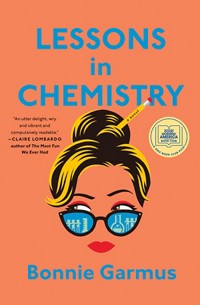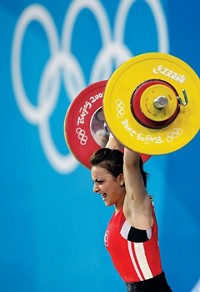Advertisement
Grab your lab coat. Let's get started
Welcome!
Welcome!
Create an account below to get 6 C&EN articles per month, receive newsletters and more - all free.
It seems this is your first time logging in online. Please enter the following information to continue.
As an ACS member you automatically get access to this site. All we need is few more details to create your reading experience.
Not you? Sign in with a different account.
Not you? Sign in with a different account.
ERROR 1
ERROR 1
ERROR 2
ERROR 2
ERROR 2
ERROR 2
ERROR 2
Password and Confirm password must match.
If you have an ACS member number, please enter it here so we can link this account to your membership. (optional)
ERROR 2
ACS values your privacy. By submitting your information, you are gaining access to C&EN and subscribing to our weekly newsletter. We use the information you provide to make your reading experience better, and we will never sell your data to third party members.
Biological Chemistry
Chemistry Unseen
For good or for bad, chemists play a central role in the world of performance-enhancing drugs
by Stephen K. Ritter
September 27, 2004
| A version of this story appeared in
Volume 82, Issue 39
The ongoing federal investigation into a possible conspiracy to distribute anabolic steroids and other performance-enhancing drugs to athletes left a dark cloud over the U.S. Olympic team as it headed to Athens for the Summer Games in early August. Several high-profile athletes connected to nutritional supplements company Bay Area Laboratory Cooperative (BALCO), which was named in the investigation, failed to qualify for the U.S. team or had positive drug tests before the games and were sanctioned. A few other athletes linked to the controversy were cleared and allowed to compete but are still under suspicion of illicit drug use.
The Olympic Games turned out to be a great success anyway. Some 11,000 athletes participated, just over 40% of them women. Both numbers are records. More than 3,000 drug tests were carried out by chemists at the Doping Control Laboratory of Athens, also an Olympic record (C&EN, Aug. 9, page 26). Not unexpectedly, there have been a record number of doping violations for an Olympics. At least 24 athletes from six sports have been sanctioned so far for failing a drug test or for refusing to take a test. None of these athletes are Americans, but some of them apparently have ties to the BALCO investigation.
Dozens of newspaper and magazine articles have focused on the investigation, covering everything from leaked grand jury testimony of the athletes to speculations on the roles that coaches and team doctors played. The public has been introduced to the chemists of the Olympic Analytical Laboratory at the University of California, Los Angeles, who were able to identify tetrahydrogestrinone (THG), the previously unknown synthetic steroid that is at the center of the controversy (C&EN, Nov. 17, 2003, page 66).
One part of the story that has been missing, however, is the broader role that chemistry played leading up to the appearance of THG. It begins with Victor Conte, the founder and owner of BALCO, which is located in Burlingame, Calif., near San Francisco. Conte built his business based on the idea of monitoring the levels of trace elements in the blood and urine of athletes and then determining the appropriate level of mineral supplements that an athlete should take to reach an optimal balance. He got his start in the early 1980s by buying a used inductively coupled plasma spectrometer and setting up an analytical laboratory.
Although he had no science training, Conte, a former musician and track athlete, studied research papers related to trace-element analysis. He found that most elite athletes tend to be deficient in several key elements, including zinc, copper, magnesium, and chromium. Conte began to advise athletes how to adjust their diets and to take appropriate mineral supplements to help improve their performance. He later developed a set of mineral supplements that he provided to his customers.
Overall, Conte's approach seemed to work very well. He quickly attracted a large clientele of professional and elite athletes. It's not a stretch to see how, at some point, Conte and his staff apparently started helping athletes determine the optimal amounts of banned performance-enhancing drugs they could take and not get caught. They also seem to have participated in a program to find new performance enhancers, such as THG, that would not be picked up in routine drug tests.
Another chapter of the story involves the person who might have originally designed and synthesized THG. In May, the San Jose Mercury News named organic chemist Patrick Arnold as one of BALCO's sources for the steroid. Arnold, founder of nutritional supplements company LPJ Research, Seymour, Ill., is known in the supplements industry as the "father of prohormones" for introducing 4-androstenedione to the market in the mid-1990s. Arnold has a B.S. degree in chemistry and was working at a chemical company and taking graduate courses when he decided to start his own company.
Androstenedione is a natural hormone precursor (prohormone) that undergoes enzymatic conversion to testosterone. Arnold has developed subsequent generations of more potent prohormones, such as 4-androstenediol and 19-norandrostenediol. These drugs, banned under antidoping rules, are allowed to be sold over-the-counter in the U.S.
It's not hard to imagine that there are dozens of other people like Conte and Arnold out there that we may never hear about. It's easy to condemn what they do as unethical. But are their actions a problem if they haven't broken any laws?
In an interview several years ago, Arnold told me that he views his work as highly ethical and beneficial. "If safe and effective supplements are available that have the potential to increase the quality of life for some people, then I see nothing wrong about a person taking these, selling these, or manufacturing these," he said.
A fair number of sports commentators agree, and they believe it's too late to do much about preventing athletes from using stimulants, steroids, and peptide hormones as performance-enhancing drugs. That may be true, but the lessons being learned in the BALCO case could be invaluable for the next big thing in performance enhancement, which is likely going to be gene-transfer therapy, stem cell transplantation, or muscle-fiber transformation. It's inevitable that chemists will be working in a variety of roles, for good or for bad, should that happen.





Join the conversation
Contact the reporter
Submit a Letter to the Editor for publication
Engage with us on Twitter